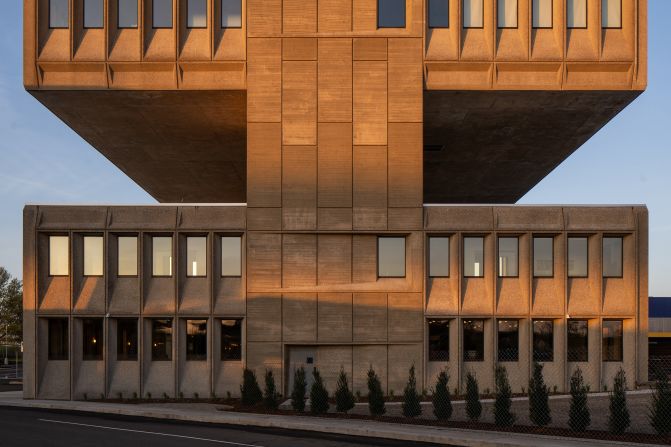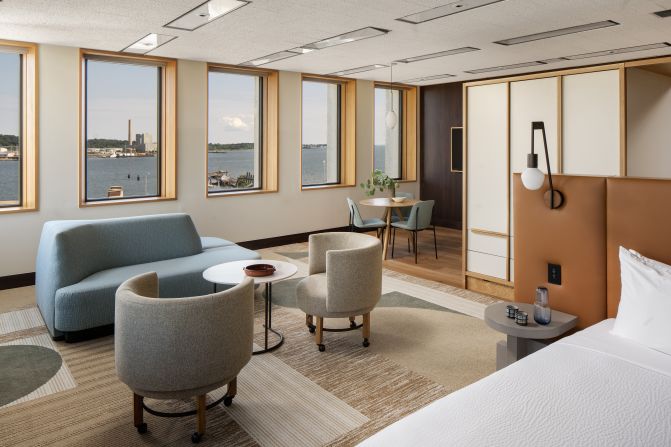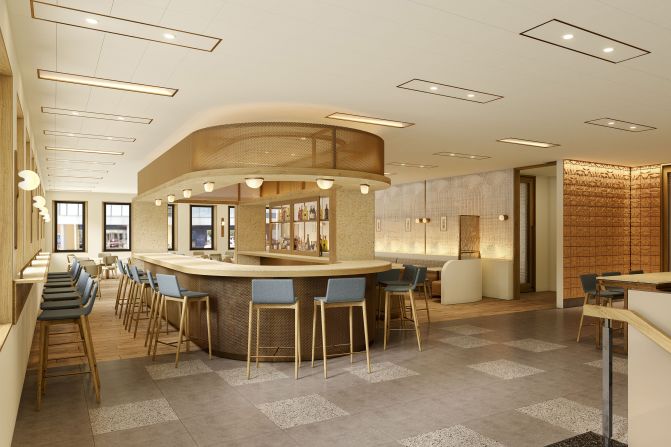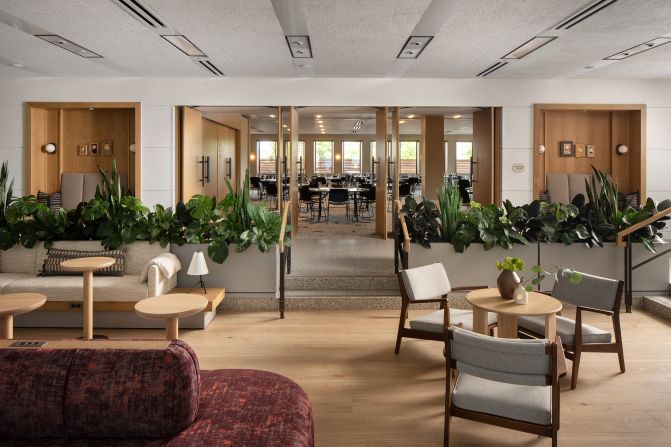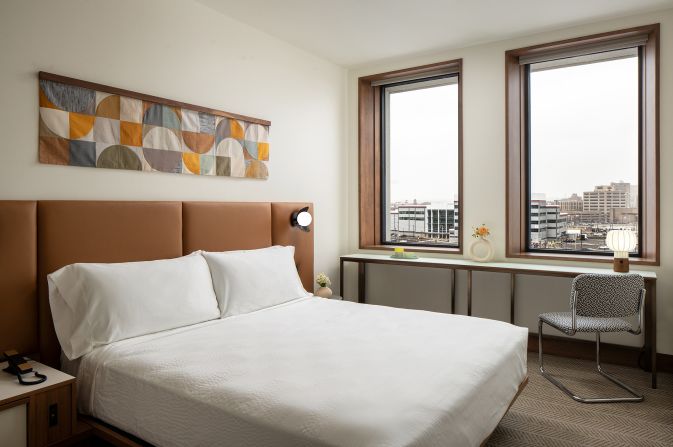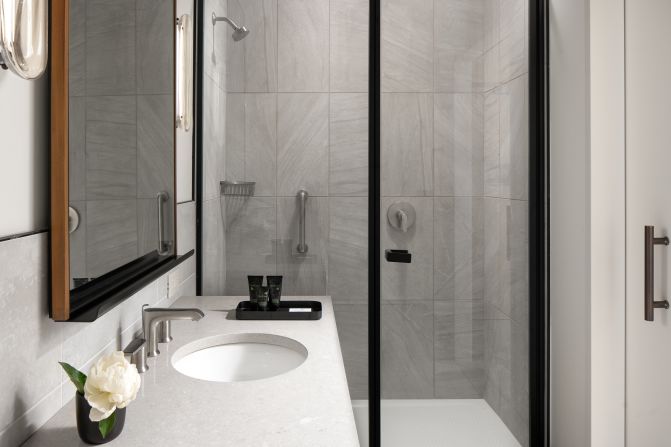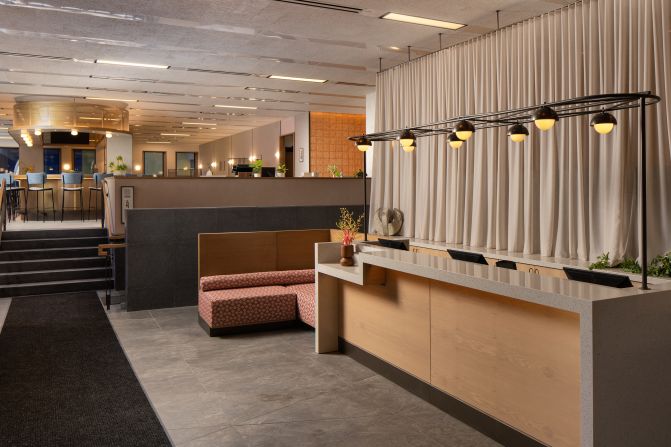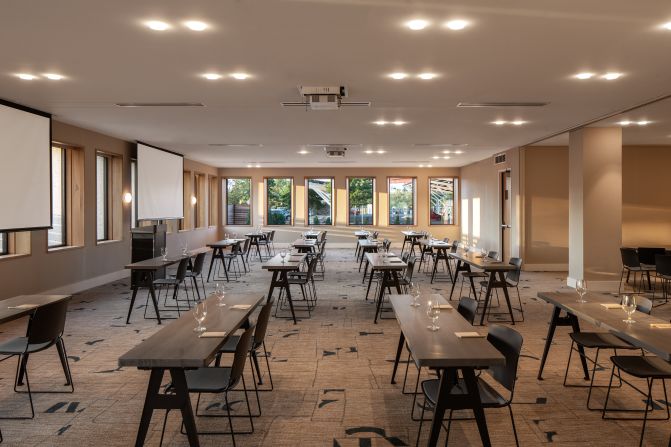Driving south on the Connecticut turnpike, a stretch of I-95 that runs through the coastal city of New Haven, it’s easy to catch a glimpse of an iconic Brutalist building designed by seminal mid-century architect Marcel Breuer.
The nine-story structure with a cubic form and concrete facade was commissioned by the Armstrong Rubber Co. and served as the company’s headquarters from 1970 until they sold it to Pirelli, another tire company, in 1988.
By 2000 though, the company had sold the building and it was destined to be leveled to make way for a shopping mall. Instead, more than two decades later, it’s been transformed into one of the greenest hotels in America.
The Hotel Marcel, part of the Tapestry Collection by Hilton, is a zero-emission hotel encompassing 165 rooms, a 9,000-plus square-foot conference center and a full-service restaurant. In 2020, architect and developer Bruce Redman Becker, principal of Becker + Becker, purchased the building – his first hotel project – to create a sustainable and unique property.
“I’ve always been interested in how I can use my talents to transform buildings and places in a way that has a positive outcome,” says Becker. “It seemed to me that this was a perfect opportunity to build a hotel that was part of the solution to the climate crisis and a model for environmental sustainability.”
While the building’s exterior is distinctly evocative of a bygone era, the hotel is indeed a model for sustainability in hospitality. It’s earned both Passive House and LEED (Leadership in Energy and Environmental Design) Platinum certifications. (These certifications promote eco-friendly construction and design, with platinum being the highest level in the LEED program.)
Instead of fossil fuels, the building runs on 100% renewable electricity for lighting, heating, air-conditioning and hot water, harnessing energy with over 1,000 solar panels on its rooftop and parking canopies.
The building itself is “recycled” – reusing an existing structure instead of building something new is itself a boon, considering new construction accounts for such an outsized share of global greenhouse gas emissions.
But while the exterior remained intact, Becker and his team reconceptualized the interior. They used Power over Ethernet (PoE) lighting, a new, low-voltage technology that uses less power than traditional wiring, which reduced the building’s lighting energy use by more than 30%, says Becker, and installed triple-glazed windows for top-tier insulation. (The windows reduce heat loss, requiring less energy to heat or cool the interior.) Besides being more eco-friendly, it’s also more economical.
“Our operating costs are much lower than those of the average hotel in New Haven,” he says. “The pocketbook will inspire other developers and owners to sustainable design and operations.”
While reimagining the original Armstrong Rubber Company building in a more sustainable way, the architect also strived to protect its historic integrity. The structure was added to the State and National Register of Historic Places in 2020 and 2021, respectively, prompting a rigorous review from the National Park Service and State Historic Preservation Office during the renovation process.
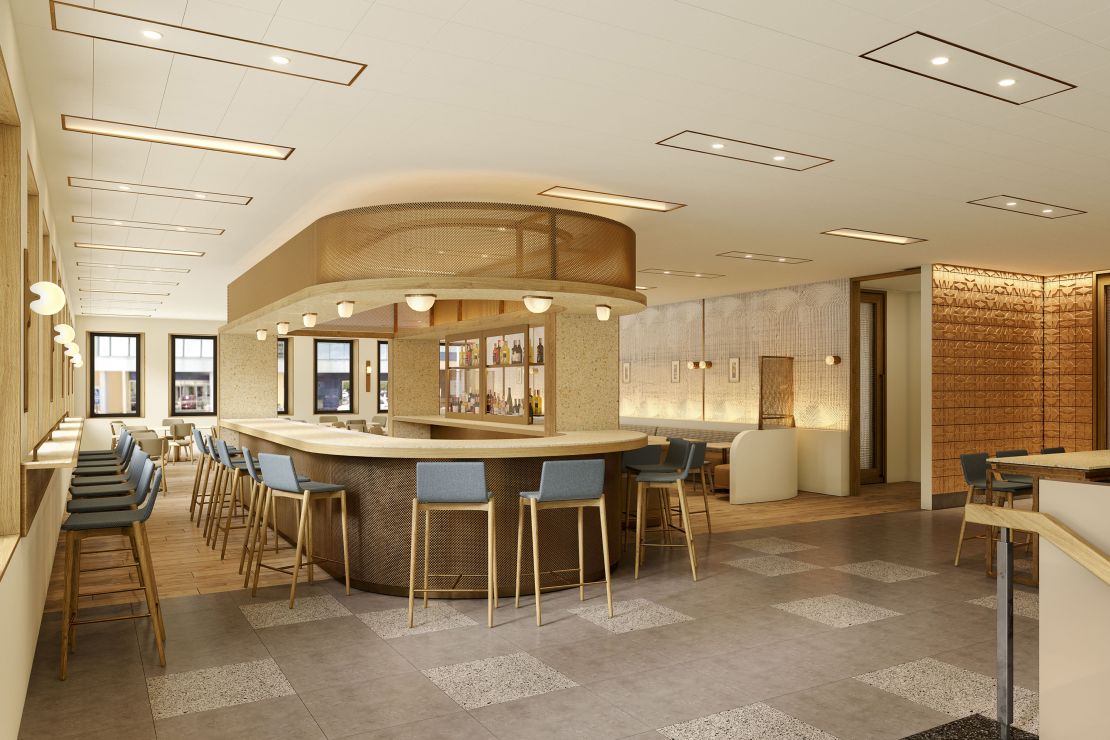
Becker + Becker worked alongside Brooklyn-based interiors firm Dutch East Design to ensure the original building’s notable design elements lived on. The interior staircases designed by Marcel Breuer, for example, were restored using board-formed concrete walls, mahogany railings and trapezoidal terrazzo stair treads.
“These beautiful stairs are an architectural marvel and are similar to those Breuer designed for the original Whitney Museum on Madison Avenue in Manhattan,” Becker notes.
Some materials from the original interiors were also repurposed, including granite pavers from the lobby, light fixtures that were restored and modified to use more energy-efficient lighting and restored wood-paneled walls inside nine waterfront rooms and suites that were once executive offices of the Armstrong Rubber Company.
Becker’s wife and partner, Kraemer Sims Becker, curated the art collection, “which, like the architecture, reflects a commitment to both sustainability and Bauhaus-inspired design,” he adds. Just one example: each king room has an original handmade textile wall hanging by Brooklyn artist Cory Emma Siegler, made from fabric samples that would have otherwise ended up in a landfill.
In addition to the hotel’s art, a bevy of other sustainably-minded elements and amenities are on display, like the locally-sourced ingredients served in the hotel’s restaurant, BLDG, the healthy dog treats the staff makes with repurposed kitchen scraps for the furry, four-legged guests, electric vehicle charging stations and, for whisking guests around town, a repurposed battery-powered 2016 airport shuttle.
But beyond being a sustainable building and a cool destination for architecture buffs and travelers seeking to stay somewhere with a rich backstory, the striking hotel has greater implications for the hospitality industry.
As a part of Hilton’s Tapestry Collection, the Hotel Marcel exemplifies the global hotel brand’s Travel with Purpose strategy, which aims to “advance responsible travel and tourism globally.”
And since the sustainable technologies Becker and his team tapped to create the Hotel Marcel are cost-effective and accessible, “the all-electric zero-emission model of Hotel Marcel is easily replicable,” he said. “The legacy of Hotel Marcel stretches far beyond its LEED Platinum or Passive House certification industry awards and sustainable measures. It stands as a call for transformation within an entire industry.”
